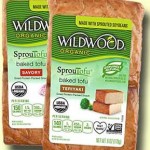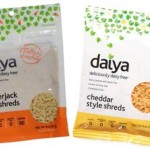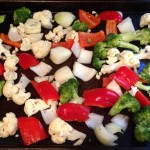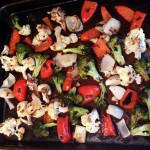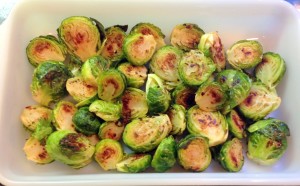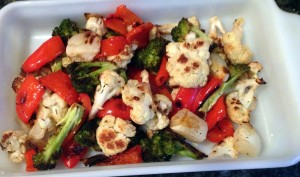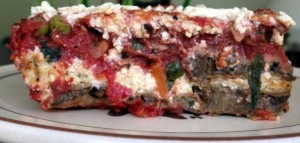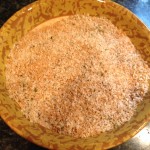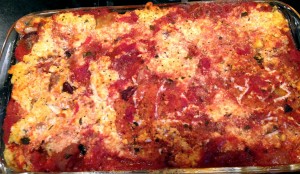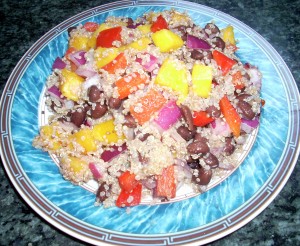Tomato sauce is delicious and easy to make. For consistently great results, here are a few tips.
First, use quality tomatoes. You don’t need to use fresh heirloom tomatoes for a 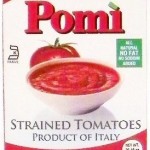
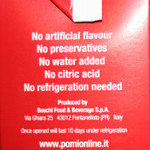 wonderful sauce, which for most of us living in variable climates isn’t even possible most of the time. Canned or boxed tomatoes are fine. Just look for tomatoes with no added ingredients like citric acid, sodium, sugar, or other preservatives or artificial flavors. The ingredients should be only tomatoes and their juice, though added herbs
wonderful sauce, which for most of us living in variable climates isn’t even possible most of the time. Canned or boxed tomatoes are fine. Just look for tomatoes with no added ingredients like citric acid, sodium, sugar, or other preservatives or artificial flavors. The ingredients should be only tomatoes and their juice, though added herbs  are OK. Tomatoes with no added ingredients have been picked ripe, and therefore are naturally sweet and generally the best tasting. Most canned tomatoes are plum tomatoes, with the two most common types of plums being Roma and San Marzano. Many chefs prefer San Marzano tomatoes (not to be confused with the brand). San Marzanos are associated with a particular region in Italy, but also are grown in the USA and elsewhere. Some chefs additionally prefer these tomatoes
are OK. Tomatoes with no added ingredients have been picked ripe, and therefore are naturally sweet and generally the best tasting. Most canned tomatoes are plum tomatoes, with the two most common types of plums being Roma and San Marzano. Many chefs prefer San Marzano tomatoes (not to be confused with the brand). San Marzanos are associated with a particular region in Italy, but also are grown in the USA and elsewhere. Some chefs additionally prefer these tomatoes 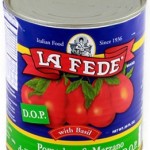 grown in Italy under very specific rules, and look for the official D.O.P. label (Denominazione d’ Origine Protetta). Try out a few to test what you prefer. Personally I buy a variety of ripe tomatoes, not only San Marzano D.O.P.
grown in Italy under very specific rules, and look for the official D.O.P. label (Denominazione d’ Origine Protetta). Try out a few to test what you prefer. Personally I buy a variety of ripe tomatoes, not only San Marzano D.O.P.
Second, go low and slow – start with aromatics and then let sauce simmer a long time. Take time to build an aromatic base of flavor by cooking your onion and garlic in a little olive oil over medium-low heat. If you like a little extra sweetness in your sauce, add in a little carrot as well. Then add in your tomatoes and optional flavorings and let the sauce cook uncovered for at least 45 minutes, and up to 2 hours, stirring occasionally. (I usually let it cook for about an hour.) Slow cooking will concentrate and thicken the sauce, giving it that delicious, authentic Italian taste.
Third, incorporate a few simple flavorings. After your sauce has cooked, turn off the heat and add in some torn, fresh basil. You can make a delicious authentic Italian sauce with nothing more than your onion and garlic base, a little salt and pepper to season, tomatoes, and torn fresh basil leaves added at the end of cooking. This simplicity is really good. Often I like to include a few other ingredients, such as oregano, thyme, bay leaf, a little hot pepper, dry red wine, and fresh parsley.
That’s it.
Here’s my recipe for basic HOMEMADE TOMATO SAUCE.
Ingredients
- 1-2 tbsp or as needed – olive oil
- 1 medium – onion, diced finely
- to taste – sea salt and freshly ground black pepper
- 4-5 cloves – garlic, minced
- ¼ tsp or to taste – crushed red pepper (optional)
- 1-2 tsp – dry Italian seasonings – mix of oregano, basil, thyme (optional)
- ½ cup – dry red wine (optional)
- 2 tbsp or as needed – tomato paste
- 2 28-oz cans – tomatoes, no additives
- 1-2 – Bay leaves (optional)
- 5-10 leaves or to taste – fresh basil leaves, torn
- 2 tbsp. or to taste – fresh Italian parsley, chopped (optional)
Directions
- Heat pan over medium-low heat. Add olive oil and let heat for a few seconds. Add onion and a pinch of salt. Cook until the onions are transparent, 5-10 minutes, stirring frequently. Add garlic – and if you like a little heat, also add in a little crushed red pepper — and cook another minute or two.
- Add in your bay leaf, freshly ground black pepper, dried herbs and wine, if using, and let cook a few minutes.
- Stir in tomato paste and cook for another few minutes. Then stir in tomatoes and add a good pinch of salt.

- Bring sauce to boil, and then reduce heat to a low simmer, and cook uncovered for at least 45 minutes, and no more than 2 hours, stirring occasionally.
- Adjust seasonings to taste, and add in torn, fresh basil leaves, and if using, fresh parsley. Optionally drizzle in a little olive oil. Remove bay leaf and discard.





